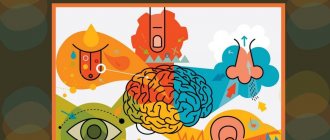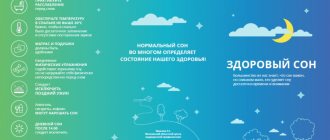March 19, 2012
Scientists are still arguing about how the human brain works. However, they already know something well.
The brain is the most complex system of the human body, which controls all its activities. With the help of this system, not only conscious processes are controlled: speech, movement, emotions. The brain also regulates all processes that occur automatically in the body: movement, blood circulation, maintaining balance and many others. Scientists are still arguing about how the human brain works. However, they already know something well.
How to kill your brain?
Alcohol and nicotine are neurotoxic poisons. Find out how quickly they can kill a person's brain.
Unique properties of the human brain
Intensive brain formation occurs at a young age, from 2 to 11 years. To fully utilize the capabilities of the human brain, new, strong neural connections are required. There are no strong connections in the children's brain yet. Their formation occurs during learning, cognition and acquaintance with the world. A typical method of memorization for this age is the use of eidetic memory, thanks to which children more easily learn a lot of new material. In adults this ability is extremely rare.
The unique characteristics of the human brain are supported by facts:
1. The organ works without breaks, without days off, even during sleep its high activity is observed.
2. The organ does not get tired from work - research has proven it. The blood of an intellectually busy person remains unchanged at the end of the working day.
3. The brain reacts the same to thoughts, whether they are inspired by fantasy or imagination.
4. The brain can store some situations for a long time and others for a short time.
5. Most of the processes are controlled by the subconscious. The subconscious is activated in order to avoid overload, bypassing consciousness.
6. The speed of thought outstrips the speed of light, which muscles cannot keep up with. Bad handwriting is proof of this.
7. The brain wakes up a little later than the body. A person who has just woken up needs exercise (physical) and for the mind.
8. Thanks to mental exercises, the volume of neurons increases and their connections improve. These exercises slow down aging and prevent Alzheimer's disease.
9. Thoughts that often appear turn into reality. Therefore, if you want to change something, you should change your own thinking.
10. Compensation is the ability of an organ to use, for example, the part that is injured.
11. Relieve brain tension through prayer or meditation.
Scientists have discovered the brain's ability to change physically. Such manipulations take place over a long period of time. Transformation depends on attitudes, on what a person thinks.
The human brain has incredible potential that has not yet been explored. For a long time it was believed that neurons do not renew themselves, but only die. The opinion changed after the discovery made by Elizabeth Good. She found that neurons can grow and also renew themselves at any time in life.
Conclusion. Training your mind can unlock a new secret of opportunity.
Should we develop mental abilities?
Is it possible for any person to unleash the abilities of the mind, for example, to solve complex problems? You can learn a lot if you apply effort and consistency in training.
Study even after graduating from school or college? I unlearned it and that’s it. But no. The brain requires constant work, otherwise it degrades. By the way, only 0.3% of the total population are some kind of genius people. The vast majority of humanity is engaged in routine and they are happy with their situation. The main thing is that a person should feel comfortable.
Important to remember
- The first signs of brain aging appear after 30 years of age
- Age-related changes are a natural physiological process, not a disease
- Causes: oxidative stress, demyelination and decreased synaptic density, leading to a decrease in the volume of the medulla
- Age-related changes are manifested by a gradual deterioration of mental processes: thinking, memorization, attention, orientation
- Brain aging can be slowed down by physical activity, proper eating habits and regular intellectual activity.
What is IQ
IQ is the intelligence quotient adopted in 1912. It is determined by solving test problems, each of which should be different in complexity.
1. IQ 70 is the lowest.
2. The IQ of an ordinary person is 100.
3. An IQ score above 100 determines a person’s increased abilities.
For example, the average Japanese IQ is 111. Only 10% of Japanese have an IQ of 130.
Is it possible to increase your IQ level? American doctor Andrea Kuszewski, at the beginning of her career, worked with a mentally retarded child. She developed a program that ran classes for three years. As a result, the child’s IQ after completing the course was 100.
After the experiments, the following conclusion was drawn:
• mental abilities can be trained;
• you can start training at any age;
• anyone can improve their abilities.
Where to begin?
A person uses approximately 5% of the brain's capacity, or 10% at best.
This body has protection that allows you to use the opportunities for as long as is currently required.
There are several rules for those who want to increase their IQ level:
1. Steadily “feed” your mind with healthy food. You can solve mathematical or logical problems, master a musical instrument or study foreign languages, explore countries while traveling.
2. The best way to train (for some) is computer games.
3. Extraordinary abilities are developed by solving one problem using several options.
4. Complex solutions to any problem should be chosen.
It has been proven that you need to develop mental abilities under stable loads. You can start by solving simple problems. In other words, go from simple to complex:
• solve crosswords;
• read books, newspapers;
• learn poetry;
• solve mathematical problems;
• remember information read;
• study languages;
• master a computer that helps you control your own emotions.
It doesn't take much time to complete these loads. Just half an hour a day is worth spending on exercise to maintain adequate brain activity until old age. It is necessary to improve the abilities of the human brain at any age.
As a result, after such classes a person receives:
• blood circulation will improve, that is, brain nutrition;
• the result of training promotes unlimited perception of information;
• the risk of developing age-related diseases or diseases like depression will significantly decrease.
Interesting! A sign of concern should be deterioration in memory. In such a situation, computer games can be recommended. It has been noticed that people who play computer games remember information better, and they also have a high reaction speed. It is the speed of reaction to an unusual situation that can reflect the state of brain activity.
The brain can learn through imagination
Creativity is not for everyone.
A simple experiment first performed more than 100 years ago. People were divided into two groups. One group was taught basic piano skills using the instrument. The other group was taught without a piano. People were simply told how to place and move their fingers correctly, and also described how a particular note sounds. By the end of the training, it was determined that both groups had the same skills - both were able to play the tune they were taught on the piano.
In the 1990s, using more modern scientific tools, scientists actually discovered that imaginary learning and practice can have the same effects on the brain as real ones.
Brain stimulation
To “stir up” brain activity, you need to tackle an interesting problem. Stimulation can begin with the speed reading technique:
• you need to study consistently for 3-4 months with a high emotional mood;
• be sure to understand the essence of what you read;
• expand the field of view of the text gradually.
In the second half of the twentieth century, the Bulgarian psychologist Georgiy Lozanov proposed a method of high-speed learning for adults. The method is called suggestology. Training takes place to music. The student, without straining, remembers new material 50% more compared to regular training.
You can start training at any time. Regular exercises, with a gradual increase in loads, will allow you to achieve good results:
1. Reading promotes the development of logical thinking.
2. Sports promote the production of endorphins, which stimulate brain activity.
3. Alternating between classes and daytime rest promotes better assimilation of information.
Scientists believe that everyone can take advantage of this opportunity to train their own abilities in order to improve attention, judgment and become simply smarter. You just need to dedicate every day to learning something new.
To maintain health, you should not use for stimulation:
• narcotic substances;
• alcoholic drinks;
• smoking cigarettes.
Any of the above methods causes degradation.
Our brain “sees” 360 degrees
The brain can see better than the eyes.
And this opportunity makes us like Spider-Man. Yes, we, or rather our brain, are capable of very carefully monitoring our surroundings and reporting what we have not yet fully realized. For example, we begin to feel that someone is watching us. A feeling of awkwardness appears, we begin to sweat, and the skin becomes covered with goosebumps. We turn our heads in this direction, and we actually see that some person is looking at us. Some people call it the “sixth sense.”
We don’t have eyes on the back of our heads, and our field of vision is quite narrow compared to other animals. But the brain doesn’t need them there. It has a more effective means of assessing the environment. For example, hearing, which is capable of noticing even the most minor changes in the surrounding background. And this ability is especially enhanced when we cannot see part of this environment.
Superpowers of the human brain
Do the capabilities of a person’s brain allow them to develop superpowers?
It is known that learning is easier to perceive at a young age. Children absorb a very large amount of information in a short period. In childhood, the foundation of fundamental knowledge is laid.
Superpowers of people can manifest themselves:
1. Counting and reading at an abnormally fast pace.
2. In verbatim memorization of the text read.
3. The ability to master a foreign language in an extremely short period of time.
4. Photographic memory.
5. The ability to clairvoyance.
6. The ability to telepathy.
Unique abilities are rare. Not everyone can cultivate such qualities. Yogis know how to train superpowers.
Often, a person develops superpowers after suffering stress or complex injuries. The fact is that the brain opens up new qualities or possibilities after the lost ones. In this case, the concept that a holy place does not remain empty is applicable. For example, people who do not have vision develop heightened qualities of sensitive hearing and touch. Sometimes people who have lost their health achieve phenomenal success. But for this they apply, in addition to desire, effort and willpower. And most importantly, they themselves believe in their opportunity.
The potential of the human brain is limitless. Is it possible to develop extrasensory abilities and intuition? Controversial issue. Some scientists think it's possible. But how much time, effort and hard work this will require is unknown.
Only a small number of people have telekinesis, so it is difficult to study it thoroughly. Such capabilities can appear in a person after serious injuries; such qualities develop in those who master the technique of energy accumulation.
THE HUMAN BRAIN—SUPER POWERS AND PROHIBITIONS
The seditious ideas presented in this article are seditious, but there are no others yet and, perhaps, there will not be others. But... Anything can happen.
N. P. Bekhtereva
Bekhtereva Natalya Petrovna is a full member (academician) of the Russian Academy of Sciences.
Vladimir Mikhailovich Bekhterev (1857-1927) - an outstanding Russian psychiatrist, morphologist and physiologist.
Error detector.
Test 'Detection of semantic and grammatical features of speech'. Histograms of the impulse activity of neurons in certain zones (Brodmann fields) of the human brain during the test.
Features of ultra-slow physiological processes that in the human brain are associated with the formation of emotional reactions and states in a patient with parkinsonism.
‹
›
The twentieth century turned out to be a century of mutually enriching inventions and discoveries in a variety of fields. Modern man has gone from the ABC book to the Internet, but nevertheless cannot cope with organizing a balanced world. Its “biological” in many parts of the world, and sometimes globally, triumphs over the mind and is realized by aggression, so beneficial in small doses, as an activator of brain capabilities, so destructive in large doses. The age of scientific and technological progress and the bloody age... It seems to me that the key to the transition from the bloody age to the era (age?) of prosperity is hidden under several mechanical protections and shells, on the surface and in the depths of the human brain...
The 20th century contributed a lot of valuable information to the fundamental knowledge about the human brain. Some of this knowledge has already found application in medicine, but is used relatively little in education and training. Man as an individual already benefits from the achievements of the fundamental sciences about the brain. A person as a member of society still has little “profit” both for himself and for society, which is largely due to the conservatism of social foundations and the difficulty of forming a common language between sociology and neurophysiology. Here we mean the translation of achievements in the study of the patterns of brain function from the language of neurophysiology into a form acceptable for education and training.
Let’s try to figure out whether we are “on the path” to the mystical wisdom of “Shambhala” (a fabulous land of sages in Tibet. - Ed.
), if we are, then where? The only reliable path to the necessary and sufficient wisdom in interpersonal, personal-social and inter-societal relationships, the rational and real path to “Shambhala” lies through further knowledge of the laws of brain function. Humanity is paving the way to this knowledge through the joint efforts of neurophysiology and neuropsychology, strengthened by today's and tomorrow's technological solutions.
The twentieth century inherited and developed data and ideas about the basic mechanisms of the brain (Sechenov, Pavlov), including the human brain (Bekhterev). A comprehensive method for studying the human brain and technological progress in medicine in the twentieth century brought the most significant achievements in understanding the principles and mechanisms of the human brain. The forms of organization of brain support for human intellectual activity, the reliability of the functioning of his brain, the mechanism of stable states (health and disease) are formulated, the presence of error detection in the brain is shown, its cortical and subcortical links are described, and various mechanisms of the brain’s own protection are discovered. The significance of these discoveries for understanding the capabilities and limitations of healthy and diseased brains cannot be overestimated.
The capabilities of the brain are being intensively studied and will continue to be studied; the task of opening (or closing?) the brain code of thought processes is on the threshold. The human brain is prepared in advance for anything, it seems to live not in our century, but in the future, ahead of itself.
What do we know today about those conditions, those principles on the basis of which not only the capabilities, but also the superpowers of the human brain are realized? And what are his defense mechanisms, overprotection, and perhaps prohibitions?
Once - and in the super-accelerating passage of time, perhaps a long time ago - more than thirty years ago, stimulating one of the subcortical nuclei, my colleague Vladimir Mikhailovich Smirnov saw how the patient literally before our eyes became twice as “smarter”: more than two times His memory abilities have increased. Let’s put it this way: before stimulating this very specific point of the brain (I know, but I won’t say which!) the patient remembered 7+2 (that is, within normal limits) words. And immediately after stimulation - 15 or more. The iron rule: “for each given patient, only what is specifically indicated for him.” We didn’t know then how to “put the genie back in the bottle,” and we didn’t flirt with him, but actively pushed him to return - in the interests of the patient. And this was an artificially induced superpower of the human brain!
We have known about the superpowers of the brain for a long time. These are, first of all, the innate properties of the brain, which determine the presence in human society of those who are able to find the maximum of correct decisions in conditions of a shortage of information introduced into consciousness. Extreme cases. People of this kind are valued by society as having talents and even geniuses! A striking example of the superpowers of the brain are various creations of geniuses, the so-called high-speed counting, almost instantaneous vision of the events of a whole life in extreme situations, and much more. It is known that it is possible for individuals to learn a variety of living and dead languages, although usually 3-4 foreign languages are almost the limit, and 2-3 is the optimal and sufficient number. In the life of not only talent, but also the so-called ordinary person, states of insight sometimes arise, and sometimes as a result of these insights, a lot of gold is added to the treasury of human knowledge.
In the observation of V. M. Smirnov, a kind of opposite event is given in comparison with those mentioned below, however, perhaps it also contains an answer to the question to the brain that has not yet been formulated here: what and how provides superpowers? The answer is both expected and simple: in providing intellectual superpowers, the activation of certain, and probably many, brain structures plays a crucial role. Simple, expected, but incomplete. The stimulation was short, the phenomenon “didn’t get stuck.” We were all so afraid of the possible cost of the brain for the superpowers that were so suddenly revealed. After all, they were revealed here not in real conditions of insight, but in a semi-controlled, instrumental way.
Thus, superpowers are initial (talent, genius) and can, under certain conditions of an optimal emotional regime, manifest themselves in the form of insight with a change in the time regime (speed) and in extreme situations, also, apparently, with a change in the time regime. And, what is most important in our knowledge about superpowers, they can be formed through special training, as well as in the case of setting a super-task.
Life has confronted me with a group of people who, under the leadership of V. M. Bronnikov, are learning a lot, in particular to see with their eyes closed. “Bronnikov’s boys” have received and are demonstrating their superpowers, acquired as a result of systematic long-term training, carefully revealing their abilities for alternative (direct) vision. An objective study was able to show that in the electroencephalogram (EEG) such learning manifests conditionally pathological mechanisms that work beyond the norm. “Conditionally pathological”, apparently, in the conditions of their own, special brain defense mechanisms.
The quantitative accumulation of data about the possibilities and prohibitions of the brain, about the dual unity - at least many, if not all of its mechanisms - is now on the verge of turning into quality - on the verge of obtaining the possibility of purposefully forming a conscious person. However, the transition from knowledge of the laws of nature to their rational use is not always quick, not always easy, but always thorny.
And yet, if you think about the alternatives - life in anticipation of pressing the button of a nuclear suitcase, an environmental disaster, global terrorism, you understand that, no matter how difficult this path is, it is the best: the path of forming a conscious person and, as a consequence, society and communities of conscious people. And it is possible to form a conscious person only on the basis of knowledge of the principles and mechanisms of the brain, its capabilities and superpowers, defense mechanisms and limits, as well as an understanding of the dual unity of these mechanisms.
So what are these two-pronged brain mechanisms, these two Janus faces, what are we talking about here? Superpowers and illness, protection, as a reasonable prohibition, and illness, and much, much more.
Ideally, an example of superpowers is long-lived geniuses who are able to make correct decisions based on a minimum of information entered into their consciousness and do not burn out due to the presence of adequate self-protection. But how often does a genius seem to “devour” himself, as if “searching” for the end. What is this? Lack of the brain’s own protection both “inside” the provision of one function and in the interaction of various functions? Or maybe it, this protection, can be formed and strengthened - especially from childhood, by recognizing the makings of intellectual superpowers in a capable child?
For many decades and even centuries, learning practically important knowledge took place through education (consolidating moral values in memory) and memory training. The mystery of memory is still not solved, despite the Nobel Prizes in medicine. And the significance of the early formation of the “moral” basis of memory (although it is not called that) for society was very great; for the vast majority of children, first and then adults, the commandments turned into a hardened matrix in the brain - a fence that did not allow them to be broken, practically determining behavior person and painfully punishing the offender. The pangs of conscience (if it has formed!), the tragedy of repentance - all this, activated through error detectors, revived in the brain of the offender, together with the “terrible punishments” promised already in early childhood for breaking the commandments, in society as a whole worked stronger than judicial penalties. In real life today, many things, including “terrible punishments”, pangs of conscience, etc., to put it mildly, have been transformed, and even in the past they did not stop everyone. Disregarding the prohibitions of the memory matrix, laid down in past generations and not laid down now, a person steps towards freedom of both spirit and crime.
In the case mentioned above, memory worked primarily as a mechanism of inhibition or, if you like, as a mechanism of “local neurosis.” But if they didn’t know anything about the memory matrix in the brain, and they didn’t call it that, then memory itself, as the main mechanism that allows us to survive in health and illness, was still treated much more carefully in the old version of training than now.
From early childhood, memory forms matrices where automatisms further operate. Thus, it frees up our brain to process and use the huge information flow of the modern world, maintaining a stable state of health. But memory itself needs help, and it is especially important to help its most fragile mechanism—reading—in advance. And earlier this, apparently, was carried out with a large amount of memorization and especially difficult-to-learn prose of dead languages. Memory, having “pushed” and “pushed” everything stereotypical into automatic mode, frees everything again and again, opening up to us the enormous possibilities of the brain. The reliability of these enormous capabilities is determined by many factors, and the most important of them are daily constant training of the brain with any and every factor of novelty (indicative reflex!), the multi-link nature of brain systems, the presence of these systems in providing non-stereotypical activity not only hard, that is, permanent links, but also flexible links (variables) and much more. In the process of creating conditions for the realization of the capabilities and superpowers of the brain, the same mechanisms - and above all the basic mechanism - memory - build a palisade of protection and, in particular, protection of a person from himself, the biological in him, his negative aspirations, as well as from various emergency life situations situations.
This is the restrictive role of the memory matrix in behavior (“thou shalt not kill”...). This is also its selective mechanism of restrictions, a mechanism for identifying errors.
What kind of error protection, restriction, prohibition mechanism is this - an error detector? We do not know whether nature gives this mechanism to a person from birth. But most likely not. The human brain develops by processing the flow (influx!) of information, adapting to the environment through trial and error. At the same time, in the learning brain, along with zones that ensure activity through activation, zones are formed that react selectively or predominantly to deviations from a favorable, “correct under given conditions” reaction to an error. These zones, judging by the subjective reaction (type of anxiety), are associated with the attributes of emotional activation entering consciousness. In human language - although error detectors are apparently not just a human mechanism - it sounds like this: “something... somewhere... is wrong, something... somewhere is wrong...”.
Until now, we have talked (including about the most important discovery of V. M. Smirnov) about the capabilities and physiological basis of superpowers. How can one create superpowers under normal conditions and is this always possible and, what is very important, permissible?
Now there is no answer to the question “whether it’s always” or not. However, it is possible to evoke superpowers much more often than what happens in everyday life.
It has already been said that the brain of a genius is capable of statistically correctly solving problems with a minimum of information introduced into consciousness. This is like an ideal combination of an intuitive and logical mindset.
We see the manifestation of the brain of a genius in the super-tasks he solves - be it “The Sistine Madonna”, “Eugene Onegin” or the discovery of heterojunctions. Ease of decision-making occurs with the help of optimal activation mechanisms, mainly, apparently, of an emotional nature. They are also responsible for the joy of creativity, especially if the process is combined with the brain’s own optimal protection... And this optimal protection consists primarily of the balance of brain changes during emotions (physiologically expressed - in the spatial multidirectionality of the development of ultra-slow physiological processes of different signs in the brain) and optimal slow-wave night “cleaning” the brain (you must “not throw the baby away with the bathwater” and not leave too much “garbage”)...
And yet, although memory is the basic mechanism for providing capabilities and superpowers, neither talent, nor, especially, genius can be reduced to it alone. Just remember the book by Russian scientist and psychologist A. R. Luria “The Big Memory of a Little Man”...
Superpowers of “ordinary” people, unlike geniuses, manifest themselves—if they manifest themselves—when it is necessary to solve super-tasks. In this case, the brain is able, in the interests of optimizing its work, to use conditionally pathological mechanisms, in particular hyperactivation, naturally, with sufficient protection that prevents the powerful assistant from turning into an epileptic discharge. Life can set a super task, but it can be solved either independently or with the help of teachers, and there are solutions in this life when you can pay a high price for the result. Please do not confuse this with the infamous “the ends justify the means.”
As we know from the history of religion, Jesus Christ gave sight to a blind believer, presumably by touching him. Until very recently, in attempts not to explain where it was, but at least to understand the possibility of this possibility, it was necessary to invoke the concept of so-called mental blindness - a rare hysterical state when “everything is in order, but a person does not see,” but can see the light under strong emotional stress. shaking
But now, at the very end of my life, I am sitting with Larisa at the large “meeting” table. I’m wearing a bright red wool mohair poncho, a gift from my son. “Larissa, what color are my clothes?” “Red,” Larisa answers calmly and, in response to my stunned silence, begins to doubt, “or maybe blue?” — Under the poncho I have a dark blue dress. “Yes,” Larisa says further, “I still can’t always clearly determine the color and shape, I still need to practice.” Behind are several months of very intense work for Larisa and her teachers - Vyacheslav Mikhailovich Bronnikov, his employee, doctor Lyubov Yuryevna, and from time to time - Bronnikov's beautiful daughter, 22-year-old Natasha. She can do this too... They all taught Larisa to see. I was present at almost every vision training session for the completely blind Larisa, who lost her eyes at the age of eight - and now she is 26! The blind girl adapted to life and, of course, primarily thanks to her incredibly caring father. And because she probably tried very hard, because evil fate seemed to leave her no choice.
When she was told about the opportunity to see after special training using the method of V. M. Bronnikov, neither she nor we imagined the difficulty and laboriousness of the training as a payment for the desired result.
How pretty Larisa is now! How she straightened up, cheered up, how she believes in a new future for her... It’s even scary! After all, she has not yet reached that amazing ability to see without the help of her eyes, which Bronnikov’s “older” students demonstrate to us. But she has already learned a lot, and this needs a special story.
People usually do not believe stories about what already exists in reality. Journalists make films, show them, tell stories. It seems (or maybe it really is) that nothing is hidden. And all the same, the overwhelming majority are cautious: “I don’t know what, but something is the trick here” or “They are peeking through the blindfold” - a blind black blindfold.
And after the amazing film about the possibilities of Bronnikov’s technique, I thought not so much about science, a scientific miracle, but about Larisa - Larisa as an unfortunate, tragically robbed girl, Larisa as a person who, in her great misfortune, has nothing to look at - there are no eyes at all .
Larisa is, as they say, a difficult case to learn. What deprived her of her sight is from the arsenal of the most terrible “horror stories.” Hence her changing psychological mood. Along with new possibilities, probably, a terrible picture of the crime comes to life in her brain, a new awareness of its tragic consequences, many years of trial and error in adapting to a changed world. But the girl’s dream did not die over these many years. “I always believed that I would see,” Larisa whispers. We examined her, Larisa, and them, “Bronnikov’s boys” (Bronnikov’s son, patients at different stages of education) using so-called objective research methods.
The electroencephalogram (EEG) and biocurrents of Larisa’s brain differ sharply from the usual EEG picture of a healthy adult. A frequent rhythm, normally barely visible (the so-called beta rhythm), is present in the girl in all leads, in all points of the brain. This is traditionally believed to reflect the predominance of excitatory processes. Well, of course, Larisa’s life is difficult and requires stress. But at first Larisa had very little alpha rhythm, the slower rhythm of healthy people associated with the visual channel. But Larisa’s EEG as a whole is not for the weak nerves of a specialist. If you didn’t know whose EEG it was, you could think about a serious brain disease - epilepsy. Larisa’s encephalogram is full of so-called epileptiform activity. However, what we see here once again emphasizes the often forgotten (golden!) rule of clinical physiology: “The EEG conclusion is one thing, but a medical diagnosis, the diagnosis of a disease, is necessarily made with its clinical manifestations.” Well, of course, plus an EEG to clarify the form of the disease. Epileptiform activity, especially the type of sharp waves and groups of sharp waves, is also a rhythm of excitation. Usually in a diseased brain. There are many of these waves in Larisa’s EEG, and occasionally an almost “local seizure” is visible, not even spreading to neighboring areas of the brain, the EEG is the “equivalent” of a seizure.
Larisa's brain is activated. And, apparently, in addition to those that we know about, we need to look for and discover new mechanisms that firmly protected Larisa’s brain for many years from the spread of pathological excitation, which alone is the main cause of the development of the disease - epilepsy. (With obligatory insufficiency of protective mechanisms or as a result of this insufficiency, of course.)
An objective study of brain biopotentials can be assessed differently. You can write: dominance of the beta rhythm and single and group sharp waves. Not scary? Yes, and besides, it’s true. It can be said differently: widespread and local epileptiform activity. Scary? Yes, and in addition, it leads somewhere away from the truth about Larisa’s brain. The absence of any manifestations of epilepsy in Larisa’s medical biography does not provide grounds for an inappropriate diagnosis of the disease. Including the many EEGs that were recorded from Larisa during the process of learning vision using the Bronnikov method. I believe that in this case it is legitimate to talk about the use of Larisa’s brain in the conditions of her life’s super task not only of ordinary excitatory processes, but also of hyperexcitation. In the EEG this is reflected by the already described combination of widespread beta activity and single and group acute (conditionally epileptiform) waves. The connection between what was observed in the EEG and Larisa’s real state was very clearly visible: the EEG was clearly dynamic, and its dynamics were dependent both on the initial EEG background and on the training sessions.
We also had ultra-slow processes, their various relationships and so-called evoked potentials in our stock of research methods. Analysis of infraslow potentials also emphasized the high dynamism, depth, and intensity of physiological changes in Larisa’s brain.
The widespread use of evoked potentials usually provides fairly reliable information about the brain inputs of signals through the sensory channels. Now, apparently, it is already possible to study Larisa’s reaction to some light signals - a reaction to bright light has already appeared in the EEG, but several months ago it seemed to us more appropriate (reliable) to obtain this kind of information from a person with good natural vision and fully trained alternative (direct) vision.
The most “advanced” student and son of teacher V.M. Bronnikov, Volodya Bronnikov, was presented with visual images (animals, furniture on the monitor) with open eyes and eyes covered with a thick, thick black bandage. The number of presentations of these signals was sufficient for statistically reliable detection of local evoked responses (evoked potential). The evoked response to visual signals presented with the eyes open showed rather trivial results: the evoked response was recorded in the posterior parts of the hemispheres. The first attempts to register evoked potentials to similar (the same) visual signals with the eyes tightly closed failed - the analysis was hampered by a huge number of artifacts, usually observed when the eyelids tremble or the eyeballs move. To eliminate these artifacts, an additional bandage was applied to Volodya’s eyes, but this time it fit tightly to the eyelids. (This is from the practice of clinical physiology.) Artifacts have disappeared. But alternative vision, vision without the participation of the eyes, also disappeared (for a while)! After a couple of days, Volodya again restored alternative vision, giving correct verbal answers with his eyes closed twice. His EEG changed in both the first and this case. However, when Volodya’s eyes were literally “bricked up” with our additional bandage, visual evoked potentials were not recorded. And Volodya continued to give correct answers to signals and correctly identified the presented objects! The EEG gave the impression that the signal entered the brain directly, changing its general state. But the entry of the signal into the brain—evoked potentials—after the restoration of alternative vision ceased to be registered. One could imagine... - as always, an explanation can be found. But this is what sharply narrowed the possibilities of “simply” explaining the disappearance of evoked potentials with eyes closed.
The fact is that after Volodya mastered alternative vision, let’s say, in complicated conditions - a regular bandage plus weak pressure on the eyeballs - evoked potentials ceased to be recorded even when examined with open eyes. According to objective methods, which we are accustomed to trust more than subjective ones, Volodya Bronnikov also seemed to use an alternative vision in conditions when it was possible to use the usual one... This statement is serious. It needs checking and rechecking. Besides Volodya, there are others who are already well trained in alternative vision. Finally, Larisa is already ripe for such research. But if this phenomenon is confirmed, we will have to think about an alternative (which channels?) transmission of visual information or about the direct flow of information into the human brain, bypassing the senses. Is it possible? The brain is fenced off from the outside world by several membranes; it is well protected from mechanical damage. However, through all these membranes we record what is happening in the brain, and the losses in signal amplitude when passing through these membranes are surprisingly small - in relation to direct recording from the brain, the signal decreases in amplitude by no more than two to three times (if it decreases at all !).
So what are we talking about here, what do the observed facts lead us to?
Physicist S. Davitaya proposed to evaluate the formation of alternative vision as a phenomenon of direct vision
. We are thus talking about the possibility of direct information entering the brain, bypassing the senses.
The possibility of direct activation of brain cells by environmental factors and, in particular, by electromagnetic waves in the process of therapeutic electromagnetic stimulation is easily proven by the developing effect. It can apparently be assumed that in the conditions of the super task - the formation of alternative vision - the result is actually achieved due to direct vision, direct activation of brain cells by environmental factors. However, this is now nothing more than a fragile hypothesis. Or maybe the electrical waves of the brain themselves are able to “search” the outside world? Like "radar"? Or maybe there is another explanation for all this? Need to think! And study!
What kind of protective mechanism should play a leading role in Larisa’s brain’s ability to use both normal and conditionally pathological types of activity? Many years ago, while specifically studying the epileptic brain, I came to the conclusion that not only local slow activity, reflecting changes in brain tissue, also has a protective function (as the famous English physiologist Gray Walter showed in 1953). The function of suppressing epileptogenesis is inherent in physiological processes manifested by high-voltage slow activity of the paroxysmal type. The assumption was tested: a locally sinusoidal current was applied to the area of epileptogenesis, modulating these slow waves - it clearly suppressed epileptiform activity!
In epilepsy, we see this defense is no longer active enough; it is “no longer sufficient” to suppress epileptogenesis. And further, intensifying, this most important physiological defense of ours becomes a pathological phenomenon itself, turning off consciousness for an ever longer period. In every possible way to protect Larisa from unnecessary overload, we have not yet recorded her EEG sleep. This is mainly interesting to us, although it is not dangerous for Larisa - and may even be useful. According to Larisa’s EEG and by analogy with the vast international experience in the study of epileptiform activity and epilepsy, Larisa works to form vision (direct vision) through different activation mechanisms, balanced by her own physiological defense. However, it would be wrong to completely neglect the fact that in Larisa’s EEG there is a lot of single and group acute, including high-voltage, activity - here it is, as it were, “on the verge” of the physiological; and the fact that in her EEG, recorded while awake, high-voltage paroxysmal slow activity is occasionally detected - a dual mechanism of the brain, its reliable protection, is also already “on the verge” of becoming a pathological manifestation. Let me remind you here for those who are not familiar with this area of our work: the appearance of sudden high-voltage slow waves in the EEG in the waking state reflects the transition of the physiological process of protection into a pathological phenomenon! In this particular case, however, it appears to still be fulfilling its essential physiological role, since there are no clinical manifestations of epilepsy.
The ability to control oneself is regarded primarily as a manifestation of adaptation. Physiologically, the realization of emotions “with little blood” (without the spread of pathological excitation) is carried out with a balance of ultra-slow processes - those that in the brain are associated with the development of emotions, and those that in the same brain limit their spread (super-slow physiological processes of a different sign). This form of defense, like the one described above, can also have its own pathological face - when intensified, the defense prevents the development of emotions, up to the appearance of conditions defined as emotional dullness. Is the protection considered by EEG not only a protection, but also a prohibition? To a certain extent and to a certain extent, yes. And first of all in relation to pathology or conditional pathology, in this case – conditional epileptogenic activity. Even here it is possible, however, with some stretching, to talk about the duality of physiological defense. Protection “from” and prohibition “on” the development of emotion is much more specific in the second defense mechanism.
As we move from a physiological process to a pathological one, its prohibitive function becomes more and more pronounced.
Both of the defense mechanisms presented here, unlike the one formed by memory, have physiological correlates, which makes them “tame” for study. Information about them is given here in connection with the conversation about Larisa, but not everything is the result of direct research; the “inhibitory” role of the error detector is not manifested in its physiological correlates, although they exist. The inhibitory properties of the error detector manifest themselves in the subjective, emotional, and then often in the behavioral and motor components. However, a potential duality of the error detection phenomenon also exists. The error detector is normally our defense, but when hyperfunctioning it causes pathological manifestations such as neurosis and obsessive states; from fear, which protects us from the often very sensitive consequences of our mistakes, to neurosis, when the detector does not “suggest” (reminds, hints!), but demands, dominates and, in extreme form, removes a person from social life.
In contrast to what was said above, everything known about memory - the most important, basic mechanism that determines the stable state of both health and illness, which largely supports the behavior of the majority of members of society within the framework of moral values, the moral “code of laws” - turns out to be the result of analysis only manifestations of human activity. As I wrote at the beginning, we - for now, at least - see only the results of the invisible work of memory; The direct physiological correlates of this critical brain mechanism are unknown.
The mechanisms of brain function must continue to be intensively studied. In my opinion, the currently known physiological laws, including those given here, should already have a place in the teaching of human studies or, more simply, the subject: “know yourself.”
The work was carried out under grant for support of scientific schools No. 00-15-97893.
Unlimited brain power
Scientists who study the human brain and its capabilities claim that this organ is fraught with many mysteries. Famous doctors have been studying the functions of the brain since ancient times: Hippocrates, Aristotle and others. Brain functions were studied by such famous scientists as I.M. Sechenov, V.M. Bekhterev. Doctor of Biological Sciences S. Savelyev created a method for determining hidden signs of schizophrenia, which studies ways to identify human abilities based on the structure of the brain. M.S. Norbekov, a doctor of psychology, created his own educational and health system, which can convince the brain that the physical health of the body has returned to normal, i.e. the body heals itself.
Modern diseases, such as apathy, depression, and various phobias, cause many problems for people. It is safer to get rid of such problems by training, for example, using the Norbekov method.
There is a well-known statement that part of the brain does not act, but is at rest. The fact is that intercellular communication can be weak or strong. It becomes strong after repeated repeated action. That is, thoughts and sensations, when repeated frequently, strengthen the subtle connections of neurons.
Why does the brain age?
The first reason is oxidative stress. Biochemical processes occur in all cells, as a result of which waste products accumulate. Normally, they are utilized and removed from the cell. But with age, some recycling processes are disrupted, and the amount of waste in the cell increases, including the accumulation of free radicals.
These are unstable atoms that damage the cell membrane, cellular organs and DNA. Their accumulation leads to oxidative stress, a process in which cells and their internal structures are damaged due to excess oxidation.
It disrupts the DNA structure inside the cell nucleus and mitochondria - the energy center of the cell, where many structural errors accumulate. This leads to damage, death and malfunction of brain neurons.
“Toxins and combustion products in cigarette smoke increase oxidative stress,” says MedSwiss clinic neurologist Dmitry Malyshev. “That’s why age-related changes in the brain occur faster in smokers. The same applies to alcohol, which increases the risk of developing vascular pathologies of the brain.”
The second reason for the decline in mental performance in old age is changes in synapses. These are nerve connections that connect neurons to each other. As people age, the density of synaptic clefts decreases, and the fewer connections between neurons, the slower mental activity occurs, for example, memorizing or learning a new skill. At the same time, an older person can perform a task just as well as a younger person, but he will need more time to think and make decisions.
The third reason is demyelination. The processes of neurons are covered with a substance called myelin, thanks to which the electrical impulse travels at high speed from cell to cell. With age, myelin becomes less and less, causing the speed of transmission of nerve impulses to slow down.
Together, these reasons give the following result: with age, the brain decreases in size, the volume of gray and white matter decreases, and the transmission of nerve impulses is disrupted. All this impairs mental abilities.
Unbelievable but true
Scientists have collected information that speaks about the phenomenal abilities of the human brain, namely:
1. The brain is considered gray. However, only dying cells turn gray. Living cells glow pink!
2. The organ works without rest from birth to death.
3. The organ contains 80 to 100 billion neurons. The left hemisphere contains more neurons.
4. According to information published in 2014, a woman’s head contains more “gray matter.”
5. Men have more white cerebrospinal fluid.
6. People with a humanitarian background have a higher percentage of “gray matter.”
7. Systematic physical exercise helps increase brain mass.
8. 60% of the brain is white matter, its color is determined by myelin, which increases the speed of electrical impulses.
9. Fat is very good for the brain.
10. The organ consumes up to 20% oxygen and needs the same amount of glucose.
11. The organ produces energy that can power a 25W light bulb!
12. It was found that organ size does not affect mental abilities.
13. The more convolutions, the more neurons, the better the memory.
14. You can increase the number of brain convolutions with the help of meditation.
15. When the process of yawning occurs, the organ cools down.
16. If a person neglects sleep, the temperature of the brain rises.
17. A person can process 70,000 thoughts per day.
18. Information in the organ moves through neurons at a speed of 1.5 to 440 km/h.
19. The organ is capable of instantly scanning and processing images in 13 milliseconds, while the blinking of the eye occurs in several hundred milliseconds.
20. According to statistics, approximately 20% of the population is left-handed. A right-handed person is most adapted to the conditions of civilization. People with left-handed ability have a harder time living.
21. Only 1% of the population can use both hands equally; they are called ambidexters.
The most important
The brain is a complex structure made up of billions of neurons.
Each of them works like a small electrical switch, transmitting nerve impulses. All information that the body receives with the help of such “electrical wiring” from the outside world enters the cerebral hemispheres, where it is processed. Illustration: biologycorner Tags:
- Memory
- Mental capacity
- Brain
3 comments • To leave a comment you must be an authorized user
- RashaDi I know from myself that the brain works worse in stressful situations. I read that glycine increases resistance to stress. So I periodically take courses of Evalar glycine forte, it also improves brain activity. Once at the pharmacy they also offered me glycine from a different manufacturer, but it didn’t help me at all.
- croppop Our brain is nature's best technology! I came across this article right after one wonderful video on the same topic, here it is: https://www.youtube.com/watch?v=1dtUAbmAKH4 I highly recommend watching it for those who are interested in the topic of the abilities of our brain.
- maksroks Cool article, thanks
Types of thinking
The abilities of the human brain and the perception of the surrounding world only partly depend on the age factor. In childhood, the level of development of the thought process is extremely simple: “I saw - I did an action.” As people grow older, they develop a visual-figurative form of thinking: “saw - analyzed similar situations / worked through options for action / assessed risks - took an action.”
Next, objects gradually change into categories and representations, and connections between them are formed. As a result, a person develops a verbal-logical abstract type of thinking, when in order to start the thought process there is no need to perform certain actions - they are all performed in the head.
In the 20th century, the famous scientist in the field of psychology W. Keller conducted an experiment on monkeys. He locked several monkeys in a cage, gave them a stick, and threw a banana nearby. Many monkeys quickly figured out that they needed to take a stick and push the banana with it. In this case, the animals used a visually effective thought process: the monkeys carried out the experiment using a stick, quickly discovering the correct solution to the problem.
The human brain is an extremely energy-consuming organ. It has long been proven that in the process of work it burns approximately 1/5 of all calories available in the human body.
After this, V. Keller complicated the task: the next banana was moved further away from the cage, and the animals were given two sticks of different lengths. For the monkeys, solving the second problem became impossible. They couldn't understand why they couldn't use the first stick to move the banana towards the cage without trying to grab the second stick. Only a small percentage of the many monkeys that took part in the experiment sat down and thought, eventually finding a solution to the problem. Instead of beating the cage with a stick, going wild, and feeling emotional, as was the case with most monkeys, the smartest animals thought and imagined the action in their imagination.
The same thing happens with people. Our brain forms a universal type of thinking: if the first algorithm developed by the intellect is not suitable for solving a problem, the consciousness begins to search for a new idea and connections until it finds the optimal option.
Emotions are the most important component of universal thinking. With the help of psycho-emotional activity of the brain, we can model the goal and modify it. Therefore, you need to try not to suppress your emotions, but you shouldn’t express them too violently. Everything must be in balance: mental activity, expression of emotions, and consumer qualities. If something is suppressed, then disturbances in the functioning of individual systems of the human body will certainly occur, which will affect the functioning of the brain and other internal organs.
If you move your eyes quickly, the human brain will not be able to adequately process the information received. The same can be said about auditory perception.
Content:
- 1 To the brain, fantasy and reality are the same
- 2 Human memory can only hold 7 different objects in mind
- 3 Yellow-green is the most sensitive shade for the brain
- 4 The subconscious mind is an order of magnitude smarter than you
- 5 The brain works continuously
- 6 Work that uses intelligence does not tire the brain
- 7 Meditation and prayer have a relaxing effect on the brain
- 8 The brain is often so fast that muscle mechanics can’t keep up.
- 9 The brain does not wake up immediately and later than the body
- 10 For brain activity to be complete, there should be no lack of fluid
- 11 For the brain, any shadow is a continuation of the object
- 12 The brain is trained, like all muscles
- 13 What we keep in mind is what we tune in to
- 14 It’s much easier for the brain to “digest” a male voice
- 15 We Are Quite Capable of Changing Our Brains
The human brain is in fact the most mysterious system of cognition of the world with creative and amazing abilities.
The brain has many abilities that we are sometimes not even aware of. Well, in order to take advantage of them and fulfill your cherished dream, it is important to understand the fundamental principles of brain functioning.
Our brain is able to build muscle in our body
Imaginary workouts, that's what they are.
It's summer now and many of us are probably again sighing bitterly about the fact that we couldn't prepare for it. All these diets and fitness centers remain our desires and memories. Do not despair! Our brains have the ability to increase the strength of our bodies if we just think about it.
In the experiment, one group of people was asked to imagine for 11 minutes every day (for 5 days) that they were working on improving their hand strength. By the end of the experiment, it was established that the group of people who thought about pumping up their arms had twice as much grip strength as those who did not.
Is it possible to get six pack abs using the same method? You won't know until you try.
Our brains are in "autopilot mode"
Have you ever felt like you were on autopilot?
As soon as we master a skill well, our brain connects a certain department to work, the so-called passive mode network. It is used to perform tasks that do not require complex analysis, since their solution has already been tested many times and brought to automaticity.
People were taught a card game that required little thought. People played well, but when, after numerous games, this same passive mode network came into play, they began to play even better.
Learning other types of skills is more difficult for people. For example, playing instruments. At first it is very difficult. But after, when your hands and fingers remember how to play correctly, your brain actually turns off. And you start doing it automatically.
↑ Yellow-green is the most sensitive shade for the brain
This shade is often called chartreuse (funny that it's named after a liqueur).
The eye receptors, as is known, perceive only red, blue and green. Moreover, the brain is designed in such a way that it does not receive anything directly about color, but only information about the various gradations of dark and light, plus data about the very difference between the colors available to it. Chartreuse is located in the table of frequencies of the spectrum accessible to visual perception approximately in the center. Because of this, it is easier for brain receptors to recognize exactly this shade. This amazing ability has not gone unnoticed by artists, magicians, and psychologists, and is often used in their practices as the most noticeable and relaxing color.
Neurofeedback training
One of the promising methods is neurofeedback training. This is a procedure that allows you to learn to control the activity of your own brain. It is based on the principle of biofeedback. During neurofeedback training, small electrical signals from the brain are measured using electrodes attached to the scalp and converted into sound and images using software. That is, a computer program creates a real-time visualization of the bioelectrical activity of the brain.
How does this happen
The doctor gives instructions - and if the brain rhythms indicate a transition to the desired therapeutic state, then the program on the screen changes the image, sound and vibration intensity of the tactile sensor. Feedback facilitates the process of learning physiological control, and the computer program makes available information that would normally be imperceptible. If necessary, the doctor uses additional techniques to control the emotional state in order to enhance the effect of neurofeedback training.
It turns out that you can influence the rhythms of the brain interactively by tracking and recording your sensations. As you continue training and consolidate the desired feeling of relaxation, you acquire the skill of moving into the necessary therapeutic state on your own at any time.
Source: https://www.beicon.ru/beauty/trenirovki-dlya-mozga-kakie-oni-bivayut-i-zachem-oni-nuzhni-soveti-specialista
Back to list











